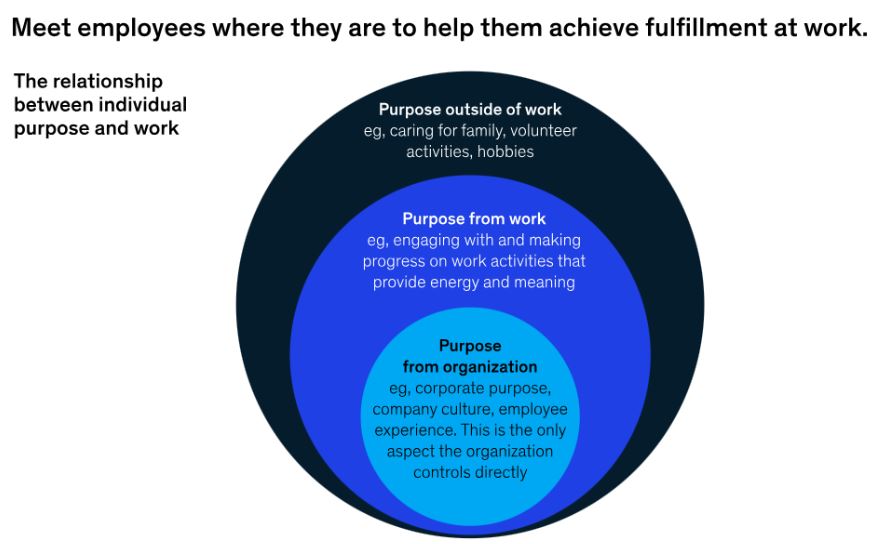-
Snooze or Choose? Attract Candidates by Becoming an Employer of Choice
Posted by Katy Ford on November 8th, 2023 
It’s no secret that the job market is completely saturated with open opportunities. According to the Bureau of Labor Statistics, at the end of August 2023, job openings increased by 690,000, bringing the total to a steep 9.6 million across the US. With so many job openings, it’s more important than ever to set yourself apart from your competition by becoming an employer of choice. In this blog, we’ll define employer of choice, discuss the main characteristics of an employer of choice, and provide strategies to help you become an employer of choice.
What is an Employer of Choice?
Earnipay on LinkedIn defines Employer of Choice as an organization “that delivers a superior employee experience and whom workers choose to work for when presented with other employment choices.” In short, an employer of choice is an employer that candidates want to work for.
What are the Characteristics of an Employer of Choice?
According to Great Place to Work, there are 11 characteristics that set organizations apart from their competition and allow them to attract qualified candidates.
Career Growth
Providing employees with career growth opportunities not only benefits the employee, but it also benefits your organization. Promoting dedicated workers shows candidates that you are committed to helping them thrive, which attracts better quality candidates, increases retention and improves your business performance overall.
Meaningful Work
Research indicates that meaningful work has many positive impacts on employee satisfaction and performance. In fact, when employees find purpose in their work, performance improves by 33 percent, workers are 75 percent more committed to their organization and they are 49 percent less likely to leave. Although it can be difficult to infuse many roles with purpose, it is vital that organizations meet employees where they are and help them find meaning in their work.

McKinsey & Company suggest first evaluating the purpose of your organization since it is the only factor that you can directly control. Ask yourself if your organization positively impacts society. Do your leaders look to the company’s purpose for decision-making? They further state, “If your company’s purpose is just a poster on the wall, you’re wasting everyone’s time.”
Appreciation and Recognition
Often in the workplace, appreciation and recognition become synonymous. They are, however, two distinct and equally important pieces to creating a positive work environment that attracts and retains employees. Recognition is primarily performance based and is usually accompanied by some form of monetary “prize,” such as a bonus, raise or award. Appreciation on the other hand, is focused on acknowledging the employee’s worth as not just an employee, but as a person and member of your organization. Thus, organizations should focus on cultivating programs that involve both recognition and appreciation in order to create cultures of engagement, loyalty and high performance.
Work-Life Balance
According to the 2022-2023 Future Forum study, approximately 81% of desk workers want flexibility in where they work, and 93% want flexibility when they work. Although remote work might not always be an option, there are plenty of ways to incorporate flexibility within your organization to improve employees’ work-life balance. Great Place to Work suggests offering generous PTO packages, wellness perks, incorporating personal goals with professional ones as part of your performance management and focusing on results versus time spent at the office.
Strong Leaders
It goes without saying that leadership can often make or break an employee’s experience at an organization. In fact, new data suggests that managers can have the same impact on a person’s mental health as their spouse! Having strong, competent leaders is vital to being an employer of choice because leaders are the ones that set the vision for the organization and help guide the company towards its goals. Indeed explains, “By inspiring and motivating teams and coordinating personal actions for the advancement of a common goal, leaders help their companies achieve excellence.”
Fairness
Job candidates are prioritizing more than ever working for organizations that represent values like diversity, equity, and inclusion. According to HR Dive, 77% of Gen Z workers and 63% of Millennials said DEI plays a major role in their decision about a workplace. Thus, making sure your organization not only focuses on these values internally, but also promotes their dedication to creating a fair environment externally, can help you attract high quality candidates.
Access to Information
Transparency is key in making employees feel part of something larger and more invested in your organization’s mission, vision and goals. Allowing employees at all levels to have access to key information enhances motivation and increases communication, which are both important in creating a satisfying work environment.
Empowerment
Another word that can be used to describe employee empowerment is autonomy. Autonomy in the workplace means “employees have some level of control over how they get work done, such as how they accomplish tasks, set deadlines, and where or when they work.” Although flexibility in where and when employees work is the most desired aspect of autonomy, allowing employees to be involved in decision making is also incredibly important. Providing autonomy to employees lets them feel more invested in and connected to their jobs, which, in turn, increases overall performance and retention.
Strong Reputation
Although a fairly obvious factor, reputation plays an important role in attracting candidates. In fact, according to Glassdoor, “92% of people would consider changing jobs if offered a role with a company with an excellent corporate reputation.” Creating a consistent reputation and ensuring the employee experience matches what they expect once they begin working for you helps create a positive feedback loop to continue attracting top candidates.
Community Involvement
SHRM states, “demonstrating social responsibility in the community is a key driver of employee engagement.” Companies that demonstrate a focus on corporate responsibility and citizenship often attract candidates who are excited to work for an organization that makes a visible difference on the world and the local community and cares about its social impact.
Fun
Creating a fun environment at work “has a positive impact on engagement, creativity, and purpose — increasing employee retention and reducing turnover.” Although not directly measured by Great Place to Work, 81% of companies that ranked as “Great” were described as fun, which suggests companies with excellent cultures and top candidates are creating environments that are not only focused on performance and inclusion, but also on creating an entertaining and engaged workplace.
How do I Become an Employer of Choice?
Based on the above information, it’s clear to see that attracting candidates is no longer solely based on the salary you offer. According to Jobvite, the top three reasons candidates choose a new job are a higher salary, the ability to work remotely, and opportunities to grow their career.
In this blog, we’ve mentioned the Great Place to Work certification several times because it is one of the best indicators of an organization being an employer of choice and is also a key deciding factor when choosing a new organization to apply to for 90% of employees.

At NAS, we work with many organizations who have achieved the Great Place to Work certification, and we are excited to share some of the strategies we’ve seen these organizations use to become top employers in their markets and regions. Here are several strategies we find to be the most effective for becoming an employer of choice.
Focus on culture.
Building a strong company culture has played a significant role for many of our clients and has helped them increase their candidate attraction.
Develop a consistent employer brand.
Did you know that employment branding can lead to 50% more qualified applicants, decrease the cost per hire by 43% and reduce employee turnover by 28%? As an employer, your brand becomes your identity. Every experience job seekers have with your brand online and offline reveals how you are perceived and whether or not potential candidates want to work for you.
Create a positive candidate experience.
The candidate experience is the coalescence of your candidates’ feelings as they go through an application process. Creating a clean, simple candidate experience is vital to getting job seekers to apply to your open positions. SHRM reported that 92% never finish online job applications for multiple reasons, including an outdated career site or non-mobile friendly site, a time-consuming application process and vague job descriptions. We recommend evaluating the content of your career site and simplifying your application process to keep candidates engaged with your career site and encourage them to complete applications.
Provide candidates with the information they want.
Candidates have reported that they want to see the following information on your career site: Culture and benefits, instructions on how to apply, employee testimonials, video content and a chatbot for application assistance. It’s also important to show what your organization can offer employees if they worked for you. Make sure you are highlighting your benefits, career development opportunities, compensation information, introductions to your leadership and how your organization promotes equality and sustainability.
Ready to get started?
Contact NAS Recruitment Innovation to learn how you can become an Employer of Choice and attract high quality candidates to your organization.
Katy Ford



